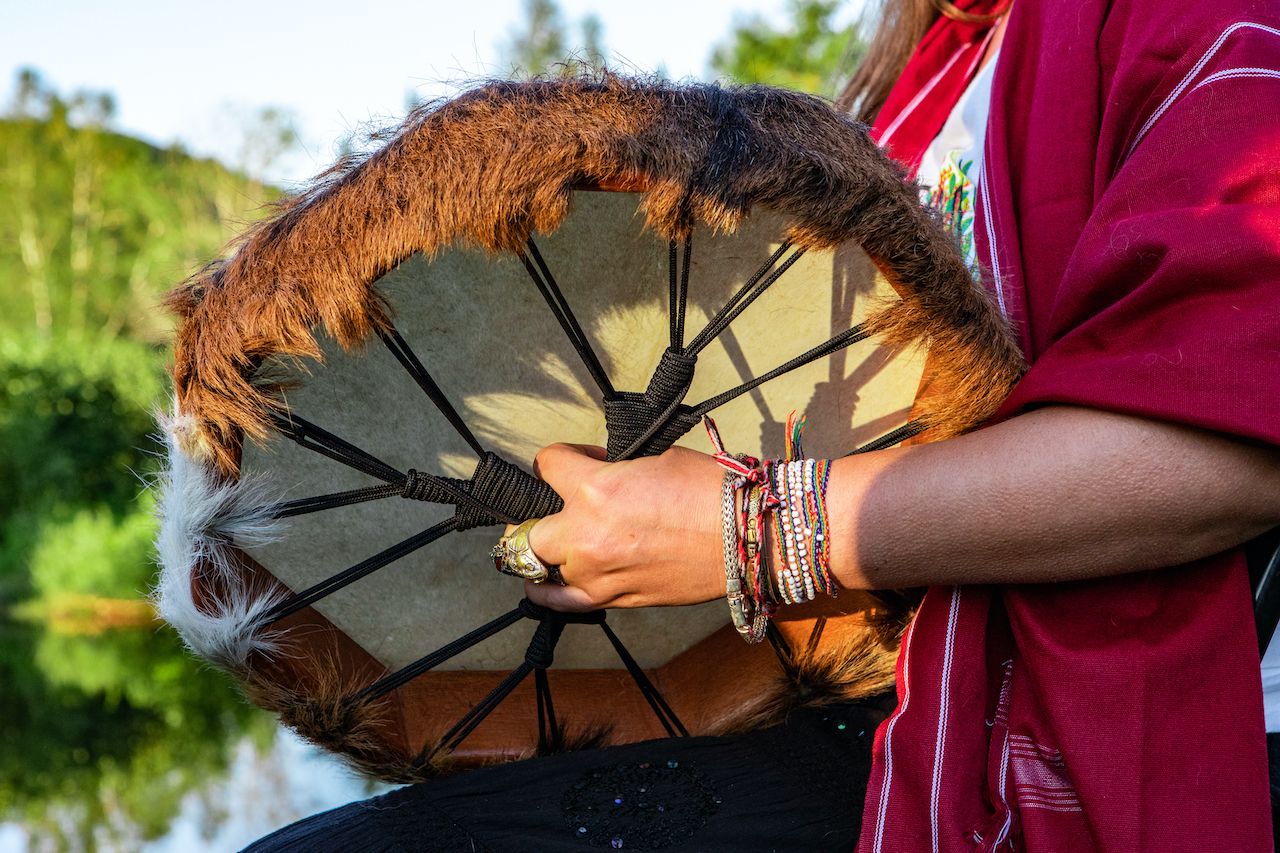Every October, I gather with my family under a bead blue sky. Powwow weekend. All around me American Indian fathers are holding sleeping babies. Mothers are trading stories, their shiny cut beads reflecting light, while braiding their children’s hair with feathers in the colors of the earth. I listen to the wind spilling through the tree leaves. Time merges with timelessness. Memories circle and carry me back across three decades of our Native community gatherings with song, dance, and prayer.

Everything You Need to Know Before Attending a Powwow
Last year my close friends asked if they could come to the powwow with me. Before we traveled to the powwow I sat down and told them the stories I am sharing with you now. By no means do I believe that I am an expert regarding powwows, or have expert knowledge of Native American people. Learning is a lifelong pursuit, but what I do know comes from growing up Native American.

Photo: Bill Perry/Shutterstock
Throughout the day I ask my friends to close their eyes, and listen to the drums, and imagine what it might have been like hundreds of years ago. Multiple times throughout the day I also take them to meet my friends in the Native community. I want them to see happy Native Americans laughing and joking with each other. Humor is an important American Indian cultural trait. We believe it is of key importance not only to laugh but to also be able to laugh at ourselves. I want them to see American Indian children eating popcorn, being silly and playing the same games all children play. And then have the opportunity to see those same children change into their dance regalia, have their hair braided, faces painted, and prepare to dance.
I want to provide stepping-stones for my friends so they can begin to see that American Indian people have respect for our traditional ways and that we are also real people too, who drive cars, and work as doctors and teachers. To show them that American Indian mothers and fathers are also regular moms and dads who cook dinner, help their children with their homework, play baseball, and go out for pizza, and that we are not relics from the past.
Most of all I want my friends to understand that Native Americans are Native Americans with deep cultural roots and lifeways, even when we are not dressed in beadwork and feathers.
We are here at the powwow to honor the past and be proud of our future. I share with my friends the stories my grandmothers told me about how each person is a link to history, and that when it comes to powwows some Native people chose to become drummers, others become dancers, but even those of us who are watching and listening, that every American Indian person at the powwow is connected, and is making a statement that American Indian people are still here. This is our celebration of life past, present and future.
Visitors are always welcome, but powwows are an Indian event and are usually not directed toward non-Indians. If learning more about Indigenous culture interests you and you are considering attending a powwow yourself, here are a few basic things you should know.
1. Powwow is a modern-day word

Photo: Alina Reynbakh/Shutterstock
All of the Elders I know tell me that before the First World War they were called gatherings. After the corn was dried, pumpkins sliced, and the wild plums brought in it was a time for giving thanks. When the food was together for the hard winter months, and when the work was all done, they came together. After the First World War these “gatherings” were held to honor the servicemen who came back.
Today a powwow is a reunion for many Native families, clans, and tribes spread apart in different cities or reservations. There is the exchange of news, ideas, song, dance, and Native fashion, style, and art. It’s a time when Native people reflect on traditions.
2. A powwow runs on “Indian time”
This means that it will begin when all the drums and dancers are ready. When everyone is ready, first there is a Ground Blessing. Then the flag bearer’s lead in with the American flag, the state flag, and an Eagle Staff. Next is the Grand Entry — the dancers represent many different tribes. After all the dancers are in the arena a Flag Song is sung, a prayer is offered, and it’s followed by a Victory Song.
3. The importance of the drum

Photo: Valmedia/Shutterstock
The drum is one of the oldest memories an American Indian has — it has always been with us and is the single most important element of a powwow. During the Grand Entry, we stand and form a circle around the dance area, feeling the heartbeat of the drum, with hundreds of Indian people wearing soft moccasins, dancing: men, women carrying babies, boys and girls, and the elders who barely move staying close to the earth and listening to the beat.
4. The dance arena or arbor is sacred and is respected, like the inside of a church
Many Native families travel hundreds of miles to attend powwows across the continent. Time and distance are not relevant — it is the renewal of tradition that is of paramount importance. It brings a long heritage back into the framework of real life.
While growing up I was taught each person has her or his own personal observance for dancing, drumming, singing, and being present at a powwow. Native people gathered around the arena are not observing; we are participating as we form a circle around the drums, singers, and dancers.
5. You must ask before you photograph
It is polite to ask permission from the dancers before you take a picture if they are away from the arena. It is necessary to ask because some do not want to be photographed due to our longstanding traditional beliefs.